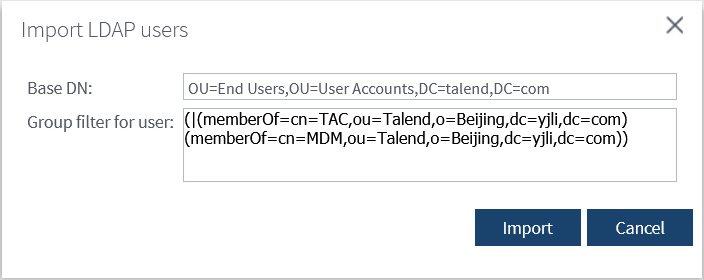Importing user accounts from LDAP server
You can import users from the LDAP server and integrate them directly in Talend Administration Center when LDAP
authentication is activated on the Configuration page. For more
information on activating LDAP authentication, see Setting up an LDAP(S) protocol.
Procedure
Did this page help you?
If you find any issues with this page or its content – a typo, a missing step, or a technical error – let us know how we can improve!

